Wood Floor Squeaks
"So...your wood floor squeaks. Very interesting..." The hope is that this will draw you out...literally.
You don't respond. You don't move. You remain in the corner of the psychiatrist's office.
Everyone in the wood floor problems group seems nice enough, but why risk it, you decide. What if...
on the way to your folding chair...
it happens...
Again!
It might help to have grown up in an old house.
I meet plenty of folks who are charmed by a squeak in their floor.
Takes 'em back to days gone by.
And yet, one can only handle so much charm, right?
If your wood floor squeaks, chances are good it is a nail down installation.
Hardwood flooring, glued down properly, generally does not squeak.
A floating floor may squeak, because the underlayments for these types of installs are usually cushy,
have a deflection.
Somewhere along a cabinet or under a door frame the floating floor is rubbing
and the result is a squeak. Eliminate the friction and the sound goes away.
If your floor was nailed down, then the possibilities are many.
And, quite possibly, the sound isn't even coming from the actual flooring you are walking on, but rather, the subfloor beneath.
So, let's start at the top and work our way down, shall we?
Irregular Milling
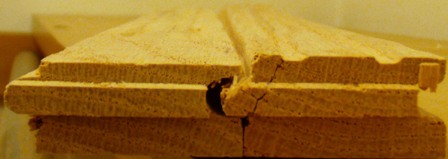
The same five mills that were best when I started are still the best today.
Flooring mills are huge operations and it doesn't take much to produce a few boards like you see here. (They are upside down.)
There are, actually, a number of good qualities even in these bad boards you see.
Namely, the space allowances of the tongue and groove, as well as the space allowance for the fasteners.
But irregular milling results in fractures which cause wood floor squeaks, as well as voids between the hardwood and the nailing surface.
More wood floor squeaks.
Poor Joinery Practice
Butt joints usually won't survive foot traffic or seasonal humidity swings.
They should be splined, or at least ship-lapped, in the case of single board repairs.
Wrong Fasteners/Pattern
The Director recommends PowerNails. A singular, L-shaped, heavy guaged wire with serrated edges.
The size and shape seems the most versatile from species to species.
Thick enough to penetrate exotics, and to do so without splitting the tongue.
Also, PowerNails allow the floor to breathe seasonally from side to side while still holding down the floor boards.
When I started, they were the only flooring fasteners. Then again, there was pretty much only one kind of nail down flooring and it was 3/4" thick.
Every flooring fastener company now has to have their answer to whatever product is being installed. Solid or engineered. 3/4" thicknesses down to 3/8".
At The Wood Floor Conservancy's School of Lower Learning, apprentice Floorwrights learn the benefits of learning and understanding the oldest line of fasteners
for the most repeatable and predictable results.
Missing Underlayment Paper
Underlayment paper lies between the subfloor and the floor for several reasons:
First, it provides a slippery surface which speeds the racking out of flooring prior to nailing, which has nothing to do with squeaks, BUT
it also eliminates friction between the flooring and the subfloor, and thus, does eliminate a potential wood floor squeak.
Finally, it allows seasonal movement in the floor which relieves stress on the thousands of joints and fasteneres within a floor, and again, the potential for wood floor squeaks.
Underlayment paper must also be rolled out evenly between subflooring levels, in the event you are shoring up your nailing surface with an additional layer of plywood.
Un-level Subfloor
The National Wood Flooring Association and The Wood Floor Conservancy defines level as variance in height within a ten foot radius that does not exceed 1/8".
You never want to test the tolerances of your floor's joinery.
Wrong Subfloor
Plywood holds nails. 1/2" is a minimum thickness and must be approved by your installer. Back in the 70's, this was the most common way for a builder to cap off the foundation.
In those days, cold weather builders would dig all their winter projects in the fall. And if your house was the one they didn't get to until the following spring
then, unfortunately, your 1/2" plywood was soaked and destined to warp and possibly rot. If that's you, definitely, you will want to install another layer of 1/2" plywood before you install hardwood.
Oriented strand board, or OSB, is suitable for nailing, provided that it is dry, the house is stable, it is 3/4" thick and tongue and grooved.
Particle board does not hold nails. Guaranteed your nail down floor will squeak if particle board is your nailing surface.
Brittle Decking
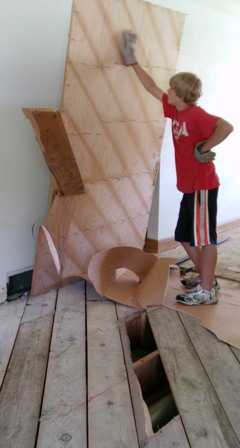
Here, a Floorwright's apprentice displays a chunk of decking that actually came up with a sheet of plywood being removed for leveling purposes.
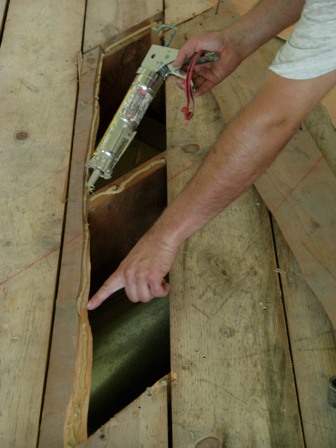
Decking is a perfectly fine nailing surface as long as it is in good repair.
It is solid wood, often one inch thick, laid at a forty-five degree angle to the floor joists.
It always requires renailing prior to install, and, as shown above, fractures must be repaired with construction adhesive.
When I discover a wood floor squeak between joists in an older home it usually involves a fracture within the decking.
This Floorwright Field Training Video shows how to splint just such a fracture.
Joist Bracing
You can still see these and renail if the basement ceiling is unfinished. They form those x's between the joists.
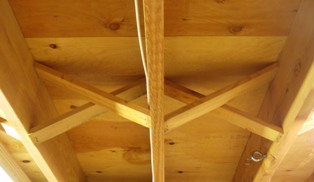
Yes, those criss-crossy things. They were put there for stability, but loosen with time.
Or, were removed to retrofit the house with new mechanicals of some kind, like heat runs or fresh air supply.
So shore them up before dressing the ceiling.
Joist
Trusses have replaced joists in new construction.
Like decking, joists were solid wood products for many many years, thus making them vulnerable to movement and splitting and warping.
When you hear of someone addressing a squeak with shims, or old library cards, it's because something moved with time--a joist.
This kind of squeak repair often results in a new squeak appearing some place else. A wonderful wild goose chase.
You will also find commercial solutions. Small jacks that tap into the side of a joist allowing you to then jack up the subfloor.
Try one before you buy a bunch.
Tin
A forced-air furnace requires tin heat runs to distribute that cozy air all over your house. Wire is often used to hang these runs place which can result in wood floor squeaks.
Also, if the supply or return run is snugly fit right up to the subfloor, your flooring fasteners can very likely pierce the tin resulting in a squeak you never had before.
Return to "Below the Outlets" from Wood Floor Squeaks
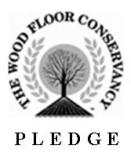
 School of Lower Learning
School of Lower Learning



New! Comments
Have your say about what you just read! Leave me a comment in the box below.